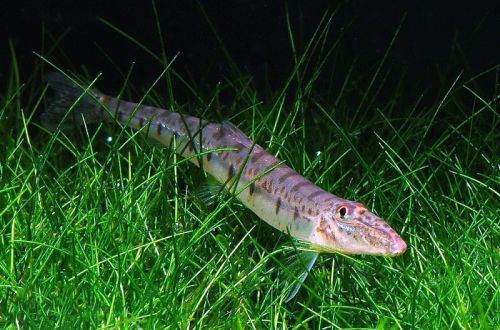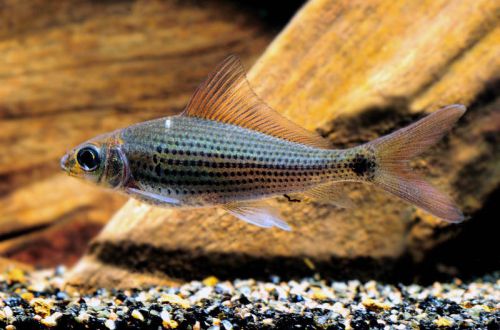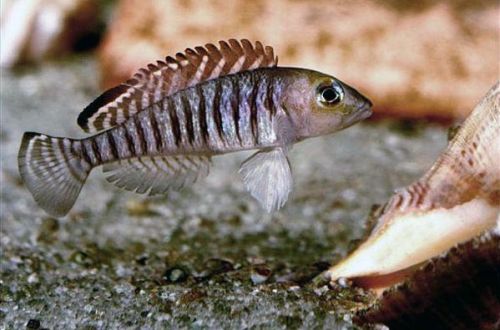
horsehead loach
The horsehead loach, scientific name Acantopsis dialuzona, belongs to the Cobitidae family. Calm and peaceful fish, perfectly compatible with many tropical species. Not demanding on the conditions of detention. Unusual appearance to someone may seem ugly to buy it to your home. But if you use this fish in public aquariums, it will definitely attract the attention of others.

Contents
Habitat
It comes from Southeast Asia, is found in the waters of Sumatra, Borneo and Java, as well as in peninsular Malaysia, possibly in Thailand. The exact distribution area remains unclear. They live at the bottom of rivers with muddy, sandy or fine gravel substrates. During the wet season, they may swim into flooded areas.
Brief information:
- The volume of the aquarium – from 200 liters.
- Temperature – 16-24°C
- Value pH — 6.0–8.0
- Water hardness – soft (1-12 dGH)
- Substrate type – any
- Lighting – subdued
- Brackish water – no
- Water movement – moderate
- The size of the fish is up to 20 cm.
- Nutrition – any drowning
- Temperament – peaceful towards other species
- Content alone or in a group
Description
Adults reach a length of up to 20 cm. However, in aquarium conditions they rarely grow to such sizes. The fish has a serpentine body shape with short fins and a tail. A characteristic feature of the species is an unusual elongated head, reminiscent of a horse. The eyes are close together and high on the head. The coloration is gray or brownish with dark spots all over the body. Sexual dimorphism is weakly expressed, males are somewhat smaller than females, otherwise there are no obvious differences.
Food
They feed near the bottom, sifting particles of soil with their mouths in search of small crustaceans, insects and their larvae. At home, sinking food should be fed, such as dry flakes, pellets, frozen bloodworms, daphnia, brine shrimp, etc.
Maintenance and care, decoration of the aquarium
The optimal size of the aquarium for a group of 3 fish starts from 200 liters. In the design, the main attention should be paid to the ground. The substrate should be soft sandy, because the fish likes to dig into it, leaving its head on the surface. Gravel and particles of soil with sharp edges can injure the integument of the body. Other decorative elements include various driftwood and shade-loving plants. Aquatic plants should preferably be planted in pots to avoid accidentally digging them up. A few leaves of Indian almond will give the water a brownish tint, characteristic of the natural habitat.
The aquarium needs moderate flow, high levels of dissolved oxygen, and high water quality. It is recommended to replace part of the water weekly (30-35% of the volume) with fresh water and regularly remove organic waste.
Behavior and Compatibility
Peaceful and calm fish in relation to other species. The horsehead loach may compete with its relatives for territory. However, skirmishes rarely result in injury. The content is possible both individually and in a group in the presence of a spacious aquarium.
Breeding / breeding
Fry are exported in large numbers to the aquarium industry from commercial fish farms. Successful breeding in the home aquarium is rare. At the time of this writing, only professional aquarists could breed this type of charr.
Fish diseases
Health problems arise only in case of injuries or when kept in unsuitable conditions, which depresses the immune system and, as a result, provokes the occurrence of any disease. In the event of the appearance of the first symptoms, first of all, it is necessary to check the water for the excess of certain indicators or the presence of dangerous concentrations of toxic substances (nitrites, nitrates, ammonium, etc.). If deviations are found, bring all values back to normal and only then proceed with treatment. Read more about symptoms and treatments in the Aquarium Fish Diseases section.





